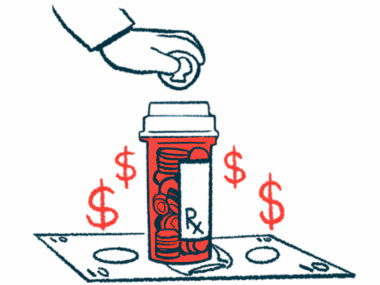At-home Tysabri Infusions Appear as Safe, Effective as Those at Clinics
Written by |

Mario Studio / Shutterstock
Tysabri (natalizumab) infusions given in the home to people with relapsing-remitting multiple sclerosis (RRMS) save money and are more convenient, while apparently as safe and effective as those given in clinical settings, a pilot study comparing the two delivery methods reported.
Nonetheless, its researchers recommended larger trials be conducted to verify these findings, particularly in managing side effects due to drug hypersensitivity while at home.
The study, “Home infusions of natalizumab for people with multiple sclerosis: a pilot randomised crossover trial,” was published in the Annals of Clinical and Translational Neurology.
At-home infusion therapy has grown since it first started in the 1970s, the study noted, following a global trend in providing more healthcare in community settings rather than hospitals.
Among the medicines now being tested for at-home administration is Tysabri, used to limit damage to the myelin sheath that insulate neurons in people with relapsing forms of MS.
The Biogen medication, usually given as an hour-long intravenous infusion in a clinical setting under doctor supervision, prevents inflammatory immune cells from entering the brain and spinal cord. These cells mistakenly attack and degrade myelin in MS.
A subcutaneous, or under-the-skin formulation, is available in Europe but not in the United States.
To test Tysabri’s eligibility for at-home delivery, Australian researchers enrolled 35 adults with RRMS in a clinical trial to assess whether home administration was safe, feasible, acceptable to patients and healthcare workers, efficient at treating symptoms, and cost-effective.
Participants, who were using Tysabri for five years on average, were randomized to usual care or at-home infusions. Each patient underwent three monthly infusions in one of those settings, then switched to the other setting for three more infusions.
Investigators compared safety outcomes, adherence to therapy, patient satisfaction, quality of life, disability, and costs between the two delivery approaches.
Overall, adherence and quality of life measures were the same, regardless of setting, and no adverse side effects were recorded. Patients reported feeling more satisfied with the convenience of at-home infusions than with those given in clinical settings, and infusions given at home proved the cheaper option.
In terms of adherence, 170 (82.1%) of the 207 total infusions given were delivered within three days of the recommended date, with no difference seen between at-home and in-clinic administration.
Although no therapy-related side effects were reported, 18 infections occurred in 11 individuals — eight among those being treated at home and 10 among those in a clinic. Respiratory infection was the most commonly reported infection overall, with more occurring in the clinic than at home (six vs. one). More urinary tract infections, conversely, took place at home than in the clinic (three vs. two).
“Infection risks for people with MS on disease-modifying therapies are elevated compared to the general population, and infection control in home healthcare is a serious problem, with some 3.5% of patients developing a serious infection during home care,” the study noted.
Two skin infections during at-home care and one during clinic care were also recorded.
Patients showed a clear preference for at-home treatment, consistently rating it as significantly more convenient on the Treatment Satisfaction Questionnaire for Medication (TSQM) — which covers effectiveness, side effects, convenience, and overall satisfaction.
At-home treatment scores were generally higher — implying a greater preference — across TSQM topics, but only those for convenience showed a statistically significant difference.
Statistically significant differences in quality of life were not seen over the course of the study, as measured by the standard 36-Item Short Form Health Survey. In both groups of patients, quality of life tended to rise slightly from the first treatment period to the next.
On average, at-home infusions cost less and took less time than in-clinic infusions. The mean cost of infusions in the clinic was AU$538 (about $396), compared with AU$480 for at-home infusions, excluding pharmacy costs. Patients spent a mean of 53.9 minutes per infusion at home, versus 146 minutes in the clinic.
“This pilot study has demonstrated no differences in safety and effectiveness between clinic and home infusions of natalizumab, and provided strong evidence for feasibility in the latter setting,” the investigators concluded.
“Large-scale studies should be conducted to further test these findings,” they added, “particularly around the safety and management of hypersensitivity [adverse events] in the home setting and for equivalence of clinical outcomes.”






